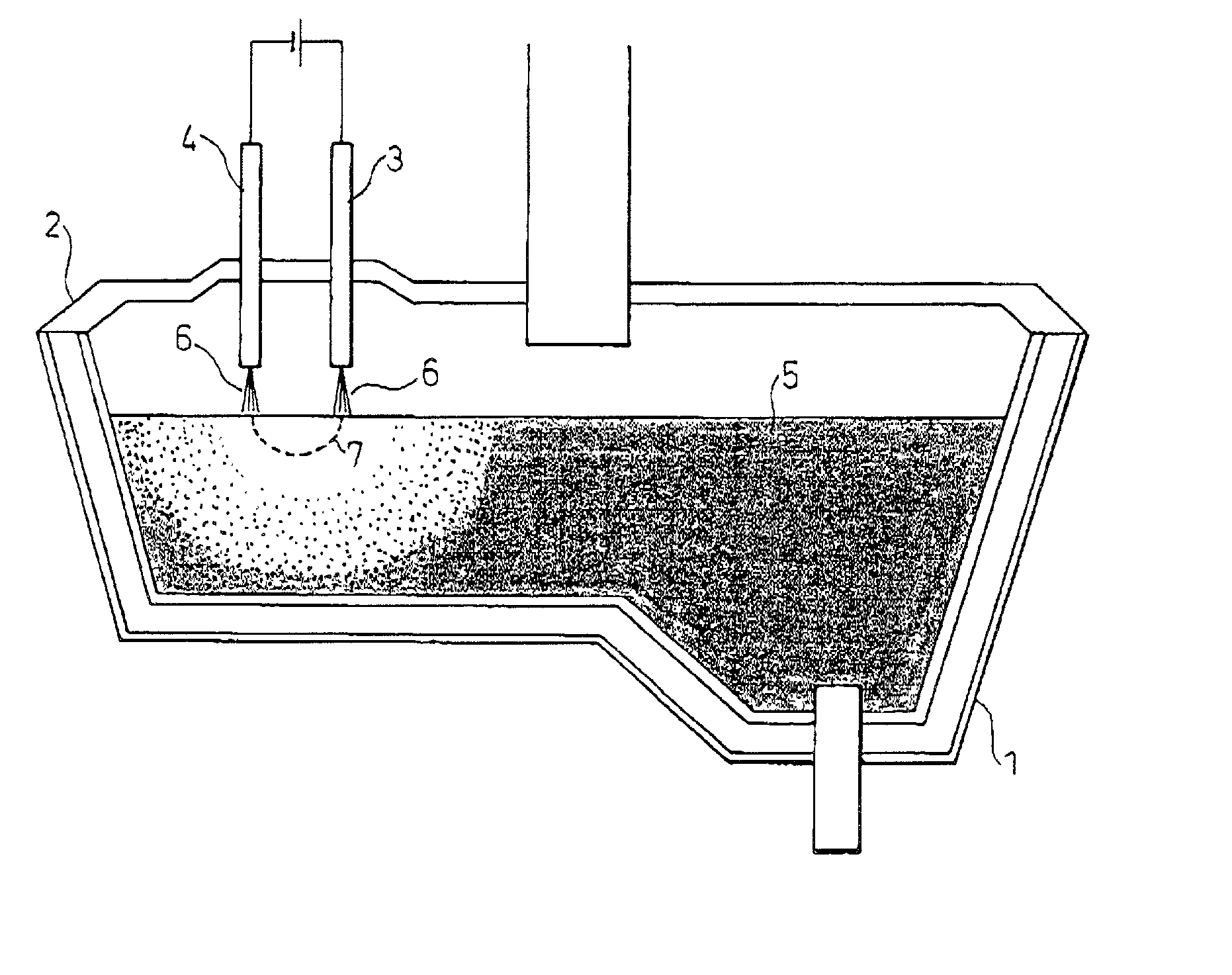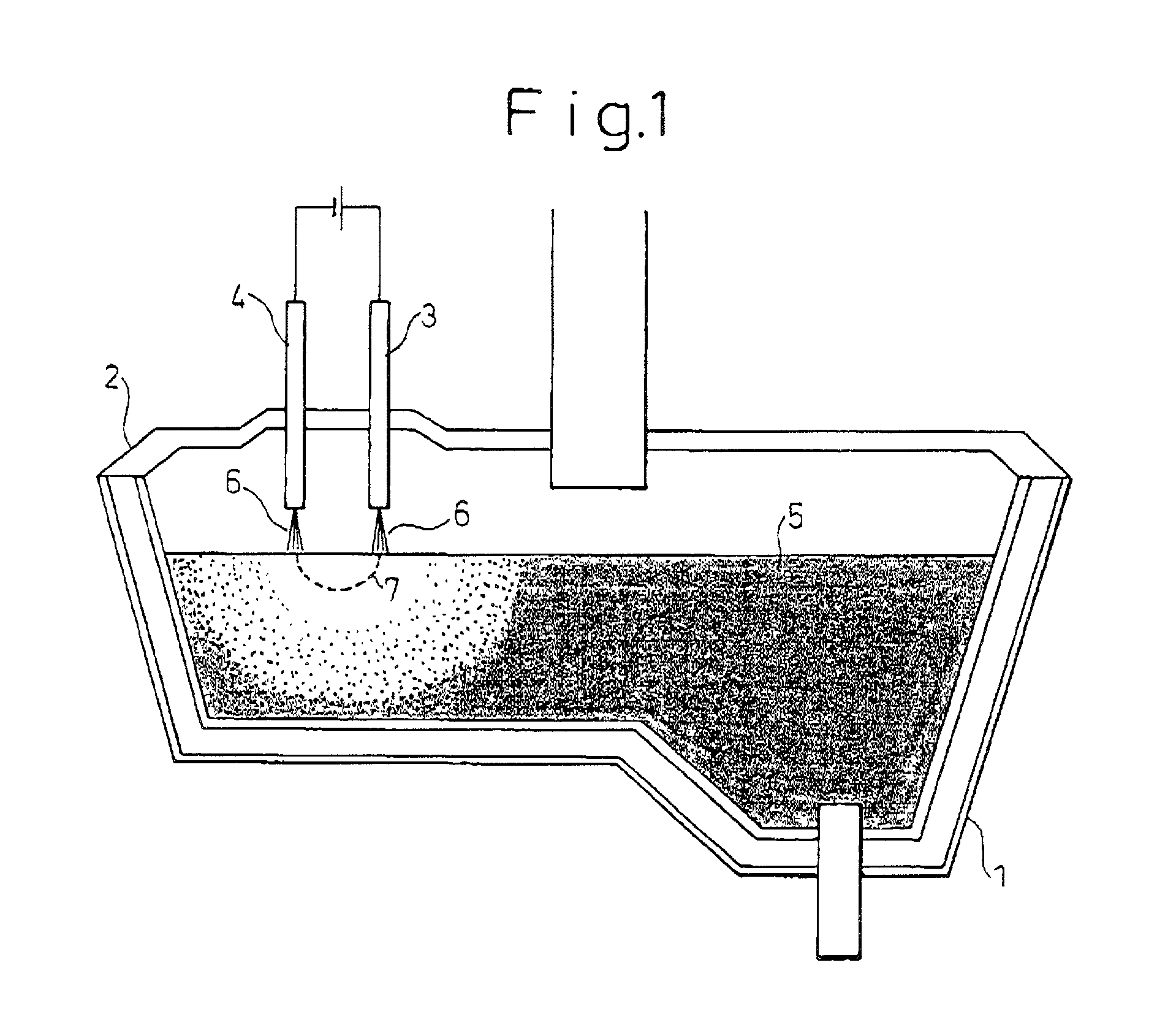Transfer-type plasma heating anode
- Summary
- Abstract
- Description
- Claims
- Application Information
AI Technical Summary
Benefits of technology
Problems solved by technology
Method used
Image
Examples
example 2
[0096] FIGS. 21, 22, 26 and 27 each show a cross-sectional view of one embodiment of the present invention.
[0097] The features of the anode shown in FIGS. 21 and 26 are explained in the following (1) to (6). In addition, FIG. 21 is a vertical cross-sectional view, and FIG. 26 is a horizontal cross-sectional view.
[0098] (1) The anode tip end has a radius Ra of the external surface of 25 mm, a radius Rcool on the cooling side of 22 mm and a thickness Da of 3 mm.
[0099] (2) A conical projection 51 formed in the center on the cooling side of the anode tip end has a bottom radius Rp of 15 mm and a height Hp of 20 mm. The side face of the conical projection forms is streamlined and matches the flow of cooling water.
[0100] In FIG. 32, a radius on the cooling side of the anode tip end in which the radius Rcool on the cooling side is 22 mm is shown on the abscissa, and a burnout critical heat flux is shown on the ordinate; a change in the heat flux is shown in the figure. In FIG. 32, a dashed...
PUM
 Login to View More
Login to View More Abstract
Description
Claims
Application Information
 Login to View More
Login to View More - R&D
- Intellectual Property
- Life Sciences
- Materials
- Tech Scout
- Unparalleled Data Quality
- Higher Quality Content
- 60% Fewer Hallucinations
Browse by: Latest US Patents, China's latest patents, Technical Efficacy Thesaurus, Application Domain, Technology Topic, Popular Technical Reports.
© 2025 PatSnap. All rights reserved.Legal|Privacy policy|Modern Slavery Act Transparency Statement|Sitemap|About US| Contact US: help@patsnap.com



